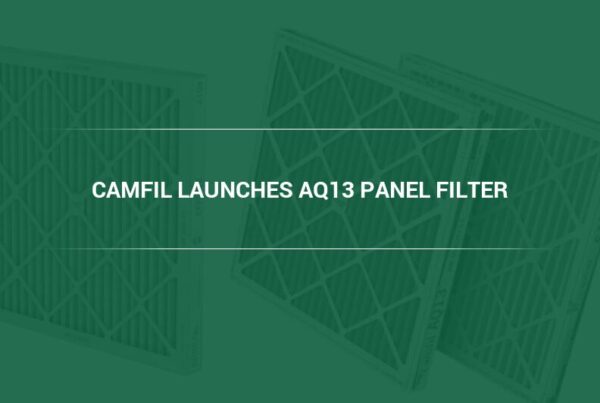Learn why homes and buildings in America’s best cities in terms of both outdoor and indoor air quality still need high efficiency air filters.
According to the American Lung Association’s ‘State of the Air’ report for 2018, air quality across much of the United States has been on a positive upward trend thanks in large part to the success of the Clean Air Act. In fact, the cities on the ALA’s list of cleanest cities for ozone and short-term levels of particulate matter showed “no days with unhealthy levels of ozone or particle pollution.” Be that as it may, residents in these cities can still benefit from the protection of high efficiency air filters.
“Indoor air pollution is made of internally generated contaminants and outdoor air pollutants, including heating and traffic particles and gases that infiltrate into our buildings,” explains Camfil USA’s Charlie Seyffer, Manager of Marketing & Technical Materials for commercial air filters and 37-year ASHRAE member and active committee participant. “Items of consideration include chemical emissions from building materials, DIY products, cleaning products, air fresheners, combustion particles from heating, cooking and candles, pet allergens, electronics, and appliance off-gassing.”
Basically, even if the air outside is clean, many indoor home environments can still have high concentrations of airborne contaminants, hence the need for air purification.
Which Cities Offer the Best Outdoor and Indoor Air Quality?
The State of the Air report identifies the following cities for being most likely to have the best outdoor and indoor air quality due to low year-round particle pollution:
- Cheyenne, WY
- Urban Honolulu, HI
- Casper, WY
- Bismarck, ND
- Kahului-Wailuku-Lahaina, HI
- Pueblo-Canon City, CO
- Elmira-Corning, NY
- Palm Bay-Melbourne-Titusville, FL
- Sierra Vista-Douglas, AZ
- Wenatchee, WA
The ALA, however, notes that there are different types of air pollution. For example, while Fairbanks, Alaska is one of the cleanest cities in terms of ozone pollution, it is actually the worst when it comes to particle pollution. This disparity is due to the number of homes in the city that rely on burning wood for cooking and heating.
As for why these cities have clean air? It’s actually a combination of factors. Hawaii, for example, has a lot going for it; the combination of abundant wind and run, plus the absence of big industry means that air quality tends to be better the whole year round as compared to an industrialized city in the East Coast.
Cities That Need HEPA Filtration Systems
On the other hand, the cities where homes and buildings seriously need high efficiency filtration systems are mostly concentrated in California, where wildfires and high traffic volume have combined to create poor ambient air quality. Los Angeles, Bakersfield, Visalia, Fresno, Sacramento, San Diego, Modesto, and Redding take the top spots on the dirtiest air list, even as California officials race to pass measures to make air safe and clean to breathe.
In the case of Los Angeles-Long Beach, which, according to the ALA, continues to suffer from the worst ozone pollution in the country, the ALA report’s findings at least have a silver lining. It shows that over the past few years, Los Angeles’s efforts to improve its air have finally shown results, albeit at a snail’s pace. From once being the worst, Los Angeles now ranks fourth for year-round particle pollution and seventh for 24-hour particulate matter pollution.
Ozone Pollution and Home Air Purifiers
Yet even homes in cities with relatively clean air may soon find a need for home air purifiers, what with the ALA report suggesting how warmer temperatures caused by climate change can increase the likelihood of ground-level ozone forming in the atmosphere. In addition, it may be harder to clean up ozone.
At high concentrations, ozone can be especially dangerous to children, the elderly, pregnant women, and individuals with pre-existing respiratory conditions. It’s no small wonder given that ozone is a primary component of smog and acid rain.
This year’s report found that across most of the United States, ozone levels increased, due in large part to high temperatures in 2016—the second hottest year on record in US history. If nothing is done to curb climate change, all the hard work in decades past to clean up sources of emissions that create ozone may come undone.
Removing Particle Pollution with Home Air Filtration Systems
The good news is that nationwide, the best progress in this year’s State of the Air report came from lower levels of year-round particle pollution, which includes black carbon, commonly known as soot, from cars, diesel trucks, power generation facilities, and wood-burning devices. Still, homeowners can’t afford to be complacent—home air filtration systems can go a long way toward maintaining healthy indoor environments that are free of dust, mold, mildew, and allergens.
Choosing Home Air Purification Systems
Remember, when choosing home air purification systems, you often get what you pay for when you choose bargain filters. To remove both particulate and gaseous pollutants two filter stages are required, seek air purifiers that use HEPA and carbon replacement filter modules. Stick to high-quality air filters from a reliable manufacturer, who can assess the air quality needs of the home before recommending an ideal air filtration solution.
At Camfil USA, we have nearly 50 years of experience keeping the air inside homes and buildings clean and safe to breathe. Get in touch with our team to learn more about the different ways to protect your home or building’s indoor air quality against air pollution. You may also explore our catalog of industrial and commercial air filters to learn more about our product line.
Camfil USA Air Filters
T: 888.599.6620
E: Lynne.Laake@camfil.com
F: Follow Camfil USA on Facebook



